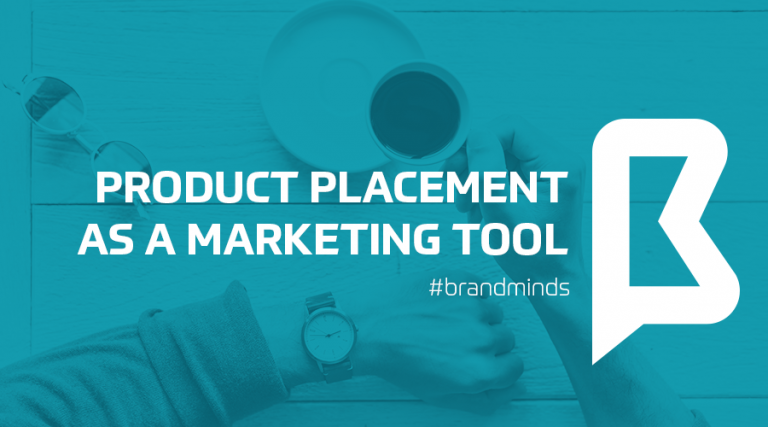12 powerful digital tools to become the best marketer
Use these 12 powerful digital tools to become the best marketer
1. KAMUA – Convert your horizontal videos into YouTube Shorts
Kamua is a browser-based tool that automates the un-fun parts of video editing. No software downloads, no file synching, no editing experience.
The team at KAMUA argues their tool is the fastest way to cut, resize and caption videos.
User benefits:
- Fully browser based;
- You work 50-90% faster;
- No previous experience required;
- Captions & Subtitles in 60 languages;
- Ultra fast cloud computing;
- A.I. automation of hard boring tasks.
2. NOTION – Complete your tasks faster to focus on creative projects
Are you looking to cut down on interruptions and stay more focused on your priorities? Check out Notion!
Notion is a new tool that blends your everyday work apps into one. It’s the all-in-one workspace for you and your team where you can customize your workflow.
Notion solves problems unique to every function from product, engineering and design to HR, sales and marketing.
3. RANK MATH – Improve your blog’s keyword ranking in Google
Rank Math is a Search Engine Optimization plugin for WordPress that brands itself as the Swiss army knife of SEO.
Just like the famous multi-purpose red tool, Rank Math provides users with a wide range of SEO focused features.
Main Rank Math benefits:
- Measure and track SEO rankings;
- Built-in advanced SEO analytics module;
- See the keywords which your website ranks for;
- Keep track of your website’s rankings;
- Check the search trends for keywords and even compare them.
4. UNSPLASH – Boost your organic reach with top quality photos
Every marketer knows that beautiful images are essential on social media.
They enhance the message and provide users with a reason to stop scrolling the feed.
Choosing the right visuals is especially important when creating advertising campaigns. Your campaign image must be impactful to boost the organic reach of your ads.
5. TAILWIND – Get discovered on Instagram with the right mix of hashtags
Tailwind is a social media scheduling tool that provides users with design, scheduling and analytics tools. This platform is particularly useful for marketers who focus their work on Instagram and Pinterest.
Tailwind acts as an Instagram Assistant which transforms your photos into hundreds of optimized, personalized designs for Instagram, Facebook and Pinterest.
Through its Hashtag Finder feature, Tailwind helps users get discovered by the right followers.
As for Pinterest, Tailwind users can create a scroll stopping Pin in less than 2 minutes.
Here’s one piece of statistics that will pique the interest of every marketer: on average, Tailwind members get 1.8x more likes on Instagram & 6.9x more Repins on Pinterest.
6. CANVA – Design email headers your subscribers will love
Canva is a graphic design platform, used to create social media graphics, presentations, posters, documents and other visual content.
This tool was created with non-designers in mind and its templates allow for anyone to design beautiful imagery.
Canva’s latest features include video messages, curved text, content planner, text effects and animated stickers.
7. MINDMASTER – Win the pitch with a visual design of your ideas
MindMaster is a full-featured collaborative mind mapping and brainstorming tool.
Marketers can use MindMaster to explore ideas and communicate information.
With MindMaster’s built-in presentation feature, you can turn mind maps into beautiful, dynamic slideshows in seconds.
Once the presentation is done, you can export the slides as an editable PPT or PDF file.
8. ARTLIST – Boost your ads conversion rate with powerful music
Artlist is a go-to library of high-quality royalty-free music and sound effects created by inspiring indie artists.
Music is an integral part of storytelling. It adds to the overall emotional outline of the content.
9. THE SCALE LAB – 10x your email reply rate
The Scale Lab is a B2B lead generation tool and a great resource for marketers looking to improve their copywriting skills.
Email is the king of marketing ROI. When done correctly, email marketing has an average ROI of 42$ for every 1$ spent.
When you use email to nurture B2B sales, the main goal of your copy is to get prospects to reply.
Here are 3 recommendations from the team at The Scale Lab about how to increase your email reply rate:
- Use the AIDA Model (grab Attention which sparks Interest which creates Desire which leads to Action);
- Focus on Benefits Over Features;
- Focus on the Prospect & Personalize.
10. UNBOUNCE – Match each visitor to the landing page where they’re most likely to convert
Unbounce is one of the leading landing page platforms that helps you convert more of your visitors into leads, sales, and customers.
Smart Traffic is a new feature of Unbounce which boosts user’s conversion rates with AI-powered optimization.
The feature automagically looks at your visitors’ attributes and sends them to the variant that’s most relevant. Smart Traffic starts optimizing in as few as 50 visits.
11. TALKIA – Increase engagement on your videos with an A.I. voiceover
Talkia uses text-to-speech software to create professional voiceovers that sound like real human voices.
The main benefit of using a professional voiceover is increased engagement.
Viewers who watch the video from start to finish are more likely to convert.
But professional voiceovers are expensive. Technology is the answer for the content creators that are looking for a different solution to their needs.
Talkia uses WaveNet technology which is the closest to human speech of all the technologies on the market today.
12. SWPELY – Create a swipe file for today’s content
Swpely is a Chrome extension that reinvented content saving.
Swpely makes it easy to collect all the great content you find.
Why do you need Swpely?
Because today’s content isn’t just websites and images. Its videos, podcasts, tweets, LinkedIn posts, and more. Bookmarking isn’t enough anymore.
Product placement as a marketing tool

Product placement and its meaning have changed during the years, along with its evolution on the market and the growing of new techniques and technologies.
One of the initial definitions comes from Balasubramanian (1994) who defines product placement as a paid message about the product communicated via intended but inconspicuous input of a branded product into a movie (or a TV program). “Consequently, through product placement the viewers’ belief
in a product or their consumer behaviour can be influenced in a positive way. (Hudson and Hudson, 2006) According to the American Federal Trade Commission, product placement is defined as a form of promotion in which branded products are placed into television programs by advertisers for a
certain fee or other consideration. (Powell, Hardy, Hawkin and Macrury, 2009),” said C Journal.
Product placement in Europe has developed under different conditions than in the USA. The main tool for regulation of television in Europe used to be Television without Frontiers Directive decreed in 1989. Later in 1997 it was amended by the provisions regarding advertising, teleshopping and self-promotion of televisions. In 25th April 2017 the European Committee (European Union, 2007) presented its latest vision, now called the Audiovisual Media Service Directive.
According to Brennan et al. (1999),quoted by Research Methodology the idea of the product placement in movies was originated due to producer’s effort to increase the reality of movies by adding to them real brands and products. However, once products started appearing in movies it was followed by increase in sales for that particular product and it caught marketers’ attention as a new promotional channel. “Sutherland (2005, online) claims the origins of the effectiveness of product placement to go back to 1934, illustrating his claim with the film “It Happened One Night”, where the actor Clark Gable was featured not wearing undershirt, which resulted in fall in the sale of undershirts by 40%. However, this example does not really illustrate the efficiency of the product placement, as the author claims; it simply illustrates a significant influence of movies and role models to the audience,” wrote Research Methodology.
Reaching the moment of one of the first product placement successful business stories, according to Karrh, the producer of Reese’s Pieces – Hershey claimed 65% increase in the sales of the product when it featured in E.T., and after that, starting from 1980s, the product placement began attracting the attention of marketers as a strategic marketing tool. After all,many researchers credit the film E.T. and Hershey with the discovery of the potential product placement represents as a marketing strategy.
Some great examples of product placement in the 90s movies can be seen here.
A closer to our times good example would be according to LSM Education, the US TV show Modern Family that integrates brands into its storylines very effectively. “Their episode titled “Connection Lost” takes place on the character Claire’s laptop screen as she attempts to locate her daughter. She does this by communicating with other members of the family through iMessage, FaceTime, and other apps. While the entire episode appears to be a blatant advertisement for Apple products, Modern Family’s executive producer has stated that there was no money exchanged between Apple and the production company. However, this is an ideal portrayal of Apple’s products, blending seamlessly into the realistic image of a middle-income American family who would be likely to use these technologies. The Apple brand actually helps to create a link between the fictional characters and the viewers: they are alike because they use the same products. Identifying with characters through the brands they use can be a particularly potent form of product placement,” explains LSM Education its point of view.
But product placement is not effective on movies, but also on TV programs and,nowadays, especially on music videos. “This is driven by the fact that music revenue is becoming increasingly dependant on advertising. The music industry has even embraced “retroactive product placement”, in which advertising is inserted digitally into pre-existing content. Such image manipulation can be performed easily, and has already been used in videos by artists including Rucker, Far East Movement, Avicii and Aloe Blacc,” writes LSM Education.
Here are some tips & tricks about product placement that may help you in your marketing strategy.

